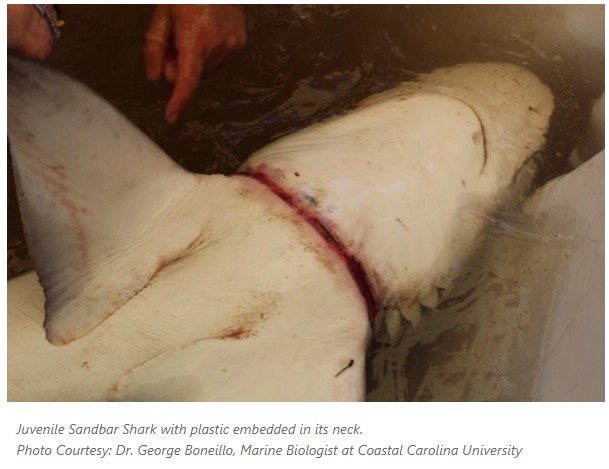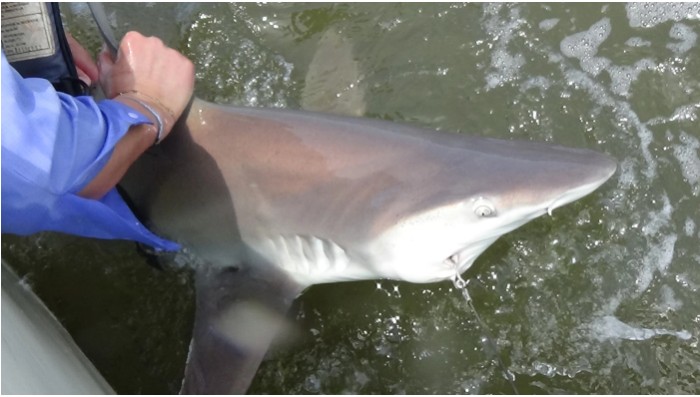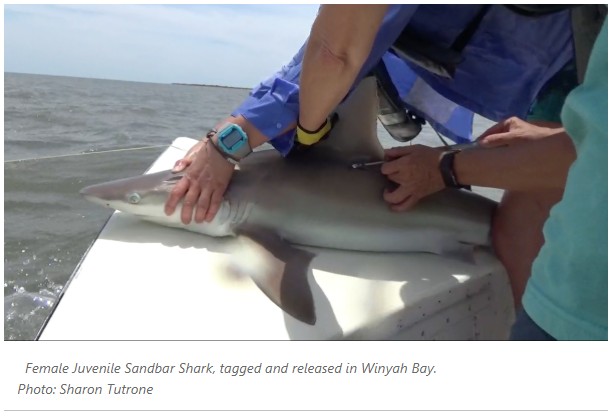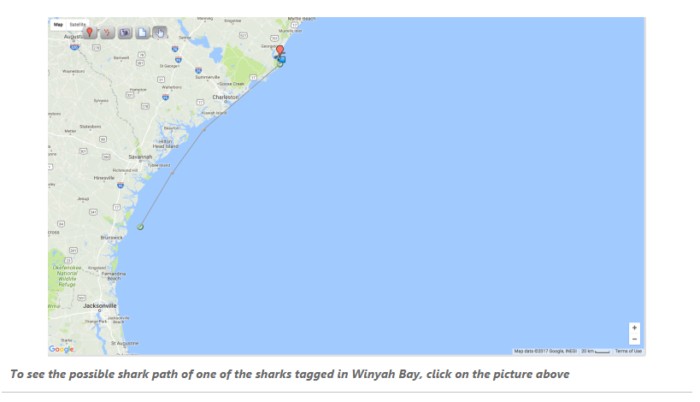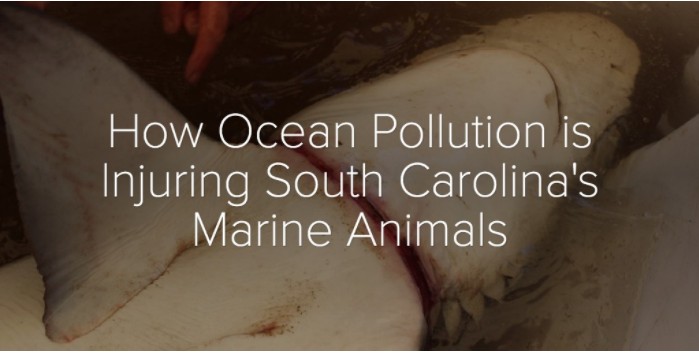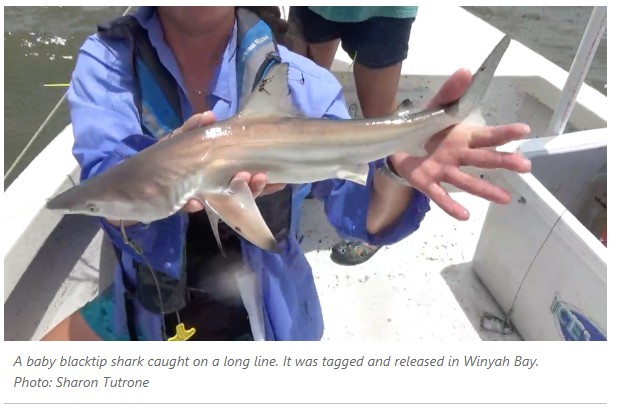ARTICLE BY FEATURED WRITER: SHARON TUTRONE
Our world is a trashy society, and that is causing big problems to oceans and the marine life that call it home.
“I hope we would be more enlightened about throwing trash in the oceans,” said Dr. Dan Abel, a marine biologist at Coastal Carolina University. “This was something that was done in the 40s, 50s, and 60s; then the environmental movement was supposed to educate people.”
According to the Ocean Conservancy, more marine debris was found in the United States than any of the other 65 countries in 2007.
Roland Geyer tallied how much plastic people have manufactured since its invention and he came up with more than eight-point-three billion metric tons. Geyer says that can cover the size of Argentina, which is the eighth-largest country in the world.
That translates to an estimated 14 billion pounds of trash -most of it plastic -is dumped in the world’s oceans every year.
Abel says that plastic trash is causing big problems for the sharks and sea turtles that swim off the coast of Myrtle Beach.
“Plastics don’t usually break down entirely, but they break down into small components which organisms ingest. There are chemicals in there, and plastics themselves can block digestive tracts,” said Abel.
According to a study published in Marine Pollution Bulletin about the impacts of plastics entering whales’ diets, found that since plastics cannot be digested, it sits in the stomach without being able to go anywhere.
This can affect more than 600 species of marine animals.
Caroline Collatos, a graduate student at Coastal Carolina University, says she has seen first-hand the damage plastics can cause.
“Both of my field seasons so far I have seen direct evidence of plastic physically harming and cutting into sharks,” said Collatos.
Last year Collatos and her team caught two sharks that were suffering from plastic wounds. One shark, a female black tip, had the plastic cord wrapped around her neck. Collatos says it cut her so deep the muscle was showing.
Collatos believes this shark was already halfway through her healing period when she was caught.
“Sharks can be very resilient when it comes to wounds, and they have a very fast and effective healing process,” said Collatos. “This shark was halfway through her original healing period, so her original wounds must have been much worse than what we saw.”
A few weeks later a female Juvenile Sandbar shark was caught. That shark was also suffering from plastic injuries. This time it was plastic cord used to wrap around a box that cut into this shark’s fifth gill.
Both plastics were removed from each shark; they were tagged and released.
Abel says the sharks are incredibly lucky they were caught.
“We were able to save both sharks, but they would have certainly died within weeks if we had not caught it on a long line and removed the strap,” said Abel.
According to the State of the Oceans Summit, it is estimated that 90 percent of the world shark population has disappeared in the last 50 years. The reason is that of the trash accumulation in the waters.
Abel, who has more than 30 years of experience researching sharks, has been shark tagging inWinyah Bay for more than 15 years. He started the program to give his undergraduate and graduate students a chance to study Juvenile Sandbar sharks.
Abel says shark tagging allows researchers the opportunity to study the movements of these ocean predators and why they like to frequent certain waters over others. The sharks can have a tag placed near the shark’s dorsal fin, or they can have an acoustic telemeter inserted into the abdomen of the shark.
Winyah Bay is a prime location to go shark tagging because it has a huge watershed. It drains 18-thousand square miles, with four different rivers dumping into the Bay. It is also the primary pathway to the Atlantic Ocean.
Many fishing vessels, sharks, and sea turtles all share this open water. The increase in congestion means more pollution, and sharks are not the only animals at risk.
Sea turtles also suffer dangerous consequences from ocean debris.
“Sea turtles have a really small brain, and they eat a lot of things that look like trash. They will eat a lot of jellies and fish and so they will mistake trash for their prey,” said Ann Wilson, park ranger. “Their brains are so little they won’t learn from their mistakes.”
Wilson works at Myrtle Beach State Park and says a lot of the trash that ends up in the ocean begins at the beach.
“It is because of our picnics, or what we take to a fishing pier. Even out on the roadway with wind and then it blows out towards the ocean,” said Wilson.
But Wilson feels fishermen pose the biggest threat to our sea turtles.
“To me, fishing line is a really slow death. As an animal keeps growing it’s going to keep strangling and strangling. It’s not going to be a quick easy death,” said Wilson.
When a sea turtle gets caught in fishing line, that is where the biologists at the South Carolina Aquarium come into play. They nurse these injured animals back to health.
“We see plastic ingestion, many of our turtles will eat the plastic out in the wild or pass it in their tank or pass it while they are here in rehab,” said Katelyn McGlothlin, a sea turtle biologist at the South Carolina Aquarium. “We had two patients we had to do surgery on to remove that plastic, which was fishing line that the animal had ingested. It was wrapped around her neck and front left flipper.”
McGlothin says that many of their patients who have ingested plastic will pass it on their own, and will spend seven to nine months in their aquarium recovering.
While some work daily to save the lives of these marine animals, there are others who are not aware of the dangers plastics pose to sharks or turtles.
“It’s very disturbing I honestly did not realize that was happening and that was going on with the animals,” said Loes Muller, beachgoer.
Muller says she is better educated now since seeing pictures of sharks with plastic wrapped around their necks. She says she will help educate others enjoying the beach to make sure everyone does their part to save marine life.
“I feel a lot of people don’t realize what they are doing and how it is affecting the animals out in the ocean,” said Muller.
According to the Marine Conservation, we should treat our oceans as our life support. To survive, we all need healthy oceans.
Therefore, those who live near beaches or visit them can make a difference when it comes to taking out the trash.
“Don’t use a straw at a local restaurant and keep reusable bags in your car,” said Collatos.
For more tips on how you can reduce ocean pollution, visit Greenpeace.org.


